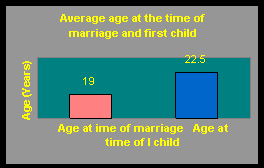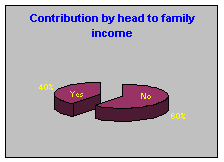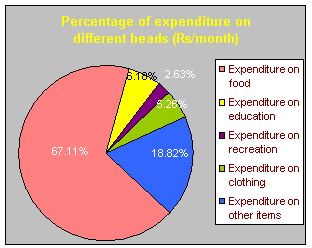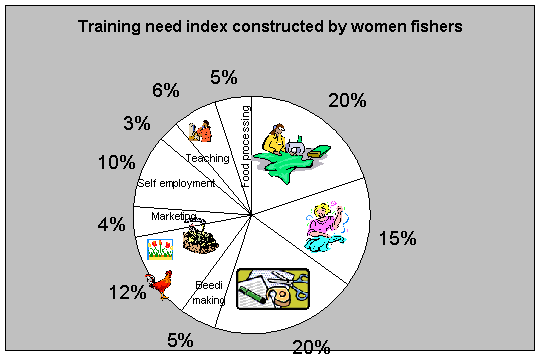![]() Prawn Pickle
Prawn Pickle
![]() Fish Pickle
Fish Pickle
Tapuriaghatta Nari Unyan Kendra
is a registered society working towards the overall socio-economic development of the women fishers of the fishing village. This society was registered on 10.01.02 by the Certificate of Registration of Societies, West Bengal (India) Act XXVI of 1961. Its registration number is S / IL / 7367. President of the society is Mrs. Bakul.
At present Tapuriaghatta Nari Unayan Kendra can be contacted for supply of following products
![]() Prawn Pickle
Prawn Pickle
![]() Fish Pickle
Fish Pickle
Hand embroidered items
(Bags, File folders, Ladies dresses, sofa back covers, table covers etc.)
Fabric painted items
Handicraft items
* Details of price and delivery will be provided as required.
Where is Tapuriaghatta?
Tapuriaghatta is a fishing village within the city limits of Kolkata, West Bengal, India. The city of Kolkata is the capital of the state West Bengal. The village has a youth club and a community hall. There is a temple near the village. Community water taps are present. There is a primary school but no health checkup facility is there. One fishery co-operative is also present. Only few women members are there in fishery co-operative who have been included on comapssionate grounds.
Why Tauriaghatta ?
A research project entitled "Conceptual framework of a working model of a women fisher group at a selected village in West Bengal" is under progress by Central Institute of Fisheries Education, (CIFE), Kolkata Centre, (Deemed University), Indian Council of Agricultural Research (ICAR). Principal Investigator of this project is Ms. Arpita Sharma, Scientist, Central Institute of Fisheries Education. (arpita_sharma@yahoo.com), This village was selected for the purpose of the study due to the reasons like manageability and expressed local interests.
Sensitisation of women fishers towards working in groups, formation and registration of society formed:
During village visits, home visits, various meetings, focused group discussions women have been sensitized to form groups and work in groups. (See photo gallery). A ‘Women Fisher Group’ was formed with Board of Directors elected by women fishers themselves. After the group was formed and Index of cohesiveness was determined after three months of its formation by asking if they would like to stay in the group. This value was found to be 0.95.
Women have named the group as ‘Tapuriaghatta Nari Unyan Kendra’. The word 'Nari' means woman, 'Unyan' means upliftment and 'Kendra' means centre. This society is functioning very well with most of the members belong to schedule castes and schedule tribe section. After applying for the registration, it is a great achievement that ‘Tapuriaghatta Nari Unyan Kendra’ has been registered on 10.01.02 by the Certificate of Registration of Societies, West Bengal Act XXVI of 1961. Its registration number is S / IL / 7367.
Back A total of 35% are having joint family setup.
A total of 35% are having joint family setup. Family information is presented in table 1 and figure 1.
Table 1: Family information
|
Family members |
Number |
|
Adult males |
1.4 |
|
Adult females |
1.6 |
|
Children (females) |
1.2 |
|
Children (males) |
1.0 |
|
Total Adults |
3.0 |
|
Total children |
2.1 |
|
Total family members |
5.01 |
|
* All values are averages |
|
In most of the families head of the family is a male (husband or father). Age at the time of marriage was 19 years and age at the time of I child was 22.5 years. (Figure 2)
Figure 2: Average age at the time of marriage and I child

A total of 61.6% did not have a desire of male child during pregnancy. Only 26.66% of the male members of the family did not habits of smoking/alcohol. Most of the male members are involved in fishing related activities.
Income Information:
Income information is presented in table 2 and figure 4.Table 2: Income information (Rs/month)
|
Income |
Rs./month |
|
Respondents Income |
495.16 |
|
Heads Income |
1335.64 |
|
Total family income |
1850.86 |
|
Fishing income |
1149.28 |
|
Non fishing income |
695.77 |
Figure 4: Information about income

Though, table 2 presents the income information but it was reported by the women that 40% of the head (male) were contributing full income to the family. (Figure 5)
Figure 5: Contribution by head (male) to family income

Expenditure related information:
Expenditure related information is given in table 3 and figure 6.Table 3: Expenditure Information (Rs/month)
|
Expenditure |
Rs./month |
Percentage to total expenditure |
|
Total expenditure |
1454.48 |
|
|
Expenditure on food |
972.69 |
67.11 |
|
Expenditure on education |
89.61 |
6.18 |
|
Expenditure on recreation |
38.07 |
2.63 |
|
Expenditure on clothing |
76.28 |
5.26 |
|
Expenditure on other items |
272.57 |
18.82 |
Figure 6: Percentage of expenditure on different heads

Household information:
Household information is presented in table 4. Only 8.33% have water connection inside their homes. Community water taps and pond water taps are the water source.Table 4: House hold information
|
House Information |
Percentage |
|
Pucca house (%) |
6.66 |
|
Water at home (Yes%) |
8.33 |
|
Toilet facility at home (Yes%) |
21.66 |
Status Categorization:
This has been done by 'Interval scaling using mean and standard deviation'. Figure 7 gives the status categorization by interval scaling using mean and standard deviation
Figure 7: Status categorization by interval scaling using mean and standard deviation

Problems of village women:
Table 5: Problem component and its rankings by key informants
|
S.No. |
Problem Component |
Assigned Weightage |
Average Rank |
|
1. |
Infrastructure |
50 |
4 |
|
2. |
Financial |
20 |
2.5 |
|
3. |
Personal |
20 |
2.5 |
|
4. |
Unemployment |
10 |
1 |
As clear from table 5, the component ‘Infrastructure’ is assigned an average score of 50. In the component namely ‘Infrastructure’ a total of 12 subcomponents have been identified by them and each have been assigned scores so that the total is 50. The 12 subcomponents with the assigned scores are given in table 6.
Table 6: Subcomponents of the problem component ‘Infrastructure’ with the assigned scores by women fishers
|
S.No. |
Subcomponent |
Assigned score |
|
1. |
Electricity |
5 |
|
2. |
Water |
5 |
|
3. |
Toilet |
5 |
|
4. |
Sewage |
5 |
|
5. |
Dispensary |
5 |
|
6. |
Ambulance facility |
5 |
|
7. |
Bus stand |
5 |
|
8. |
Pucca road |
5 |
|
9. |
School |
4 |
|
10. |
Housing |
3 |
|
11. |
Post office |
2 |
|
12. |
Market |
1 |
‘Financial component’ has been assigned a score of 20, Personal component was assigned a score of 20 and had two subcomponents namely, ‘family and child care’ and ‘alcoholism habit of men folk’. The component ‘unemployment’ was assigned the score of 10.
Training needs of women
Figure 9: Training need index constructed by women fishers

Table 11: Training needs of women fishers with percentages, average rank and assigned scores.
|
Field of training |
Percentage of women interested |
Average Rank |
Average assigned socre |
|
Tailoring |
63.63 |
10 |
20 |
|
Embroidery |
29.87 |
8 |
15 |
|
Handicrafts |
44.15 |
9 |
20 |
|
Food Processing |
7.79 |
3 |
5 |
|
Agriculture/Horticulture/ Poultry |
19.48 |
7 |
12 |
|
Marketing |
5.19 |
2 |
4 |
|
Self Employment |
15.58 |
6 |
10 |
|
Teachers |
2.59 |
1 |
3 |
|
Office Assistants |
16.88 |
5 |
6 |
|
Beedi making |
10.39 |
4 |
5 |
Trainings imparted by CIFE Kolkata Centre:
After imparting training to women feedback analysis and evaluation was also done by way of administering a pre and post training perceptions about selected variables. The same has been reported and published in form of research papers. (see under literature) The major finding of this was that women are able to use the training programmes in form of economic activities if they are given support. It is very encouraging to find that a small-scale industry is underway as a result of these training programmes.
Trainings organised by other organizations and attended by women:
Women have been sensitized to attend training programmes organised by other organisations to earn knowledge and skills. Like they have participated in ‘candle making’, çhalk making’ training programmes.
Utilization of training for economic activities:
Community Development Activities :
The president along with the women of this kendra are also actively participating in social welfare related activities like
* Adult education
* Children’s education
* Embroidery classes
* Participation in aids awareness programmes
* Anti drug campaigns
Trainings like chalk making and candle making organised by other organisations
The project is having a significant positive effect on the women of the community.
BackWorking Model for Women Fishers Society :
With this model of women fishers society being a successful venture a conceptual framework of a working model for a women fishers society is being presented as follows:
|
S.No. |
Steps to be taken |
|
1. |
Sensitising fishers, fishing community, and all related to fishery sector for increasing the participation of women fishers in fishery co-operatives |
|
2. |
Localised sensitization of women fishers, family members, informal groups, authorities and members of fishery co-operatives etc. |
|
3. |
Initiation for formation of women fisher groups and motivating them for formation of society |
|
4. |
Ensuring active participation of women fishers in society formed |
|
5. |
Providing need based trainings and utilizing the training programmes to start small scale business and participation in other social and community development issues |
|
7. |
Identification of women leaders, motivating women fishers to come forward |
|
8. |
Active participation of women fishers on decision making boards |
|
10. |
Formation of women fisher society |
|
11. |
Registration of women fisher society |
|
12. |
Strengthening of the society |
|
13. |
Necessary refinements as per the changing needs |
|
14. |
Evaluation and follow up |
For more information you can refer to following publications;